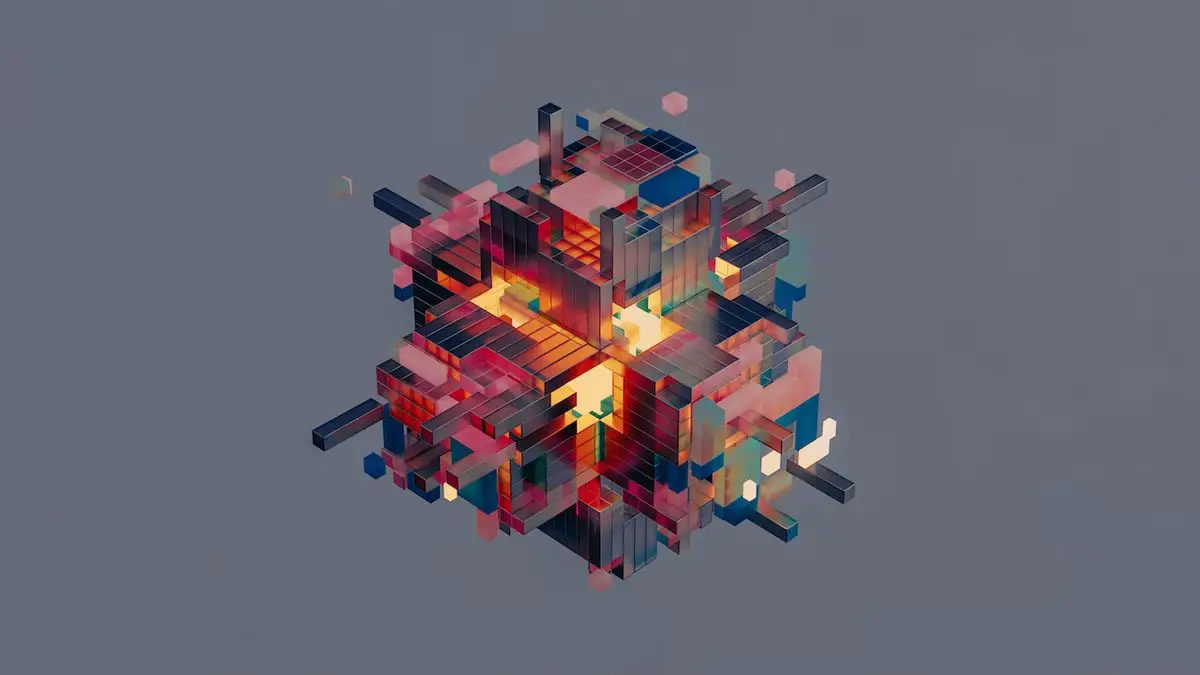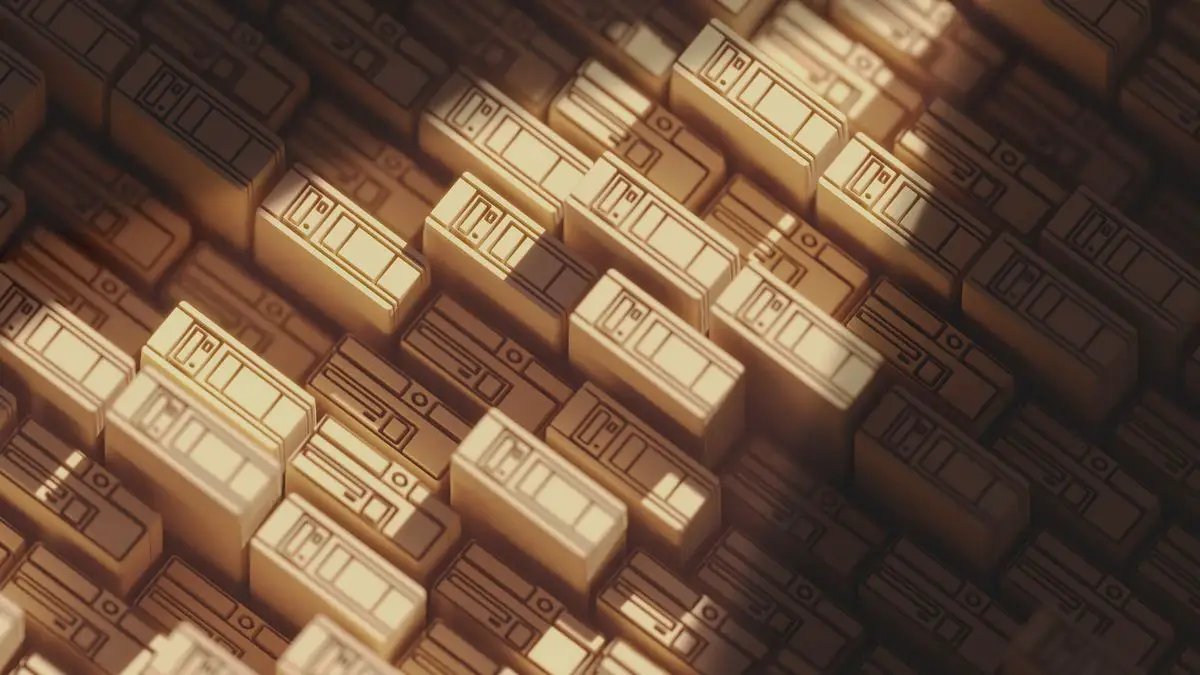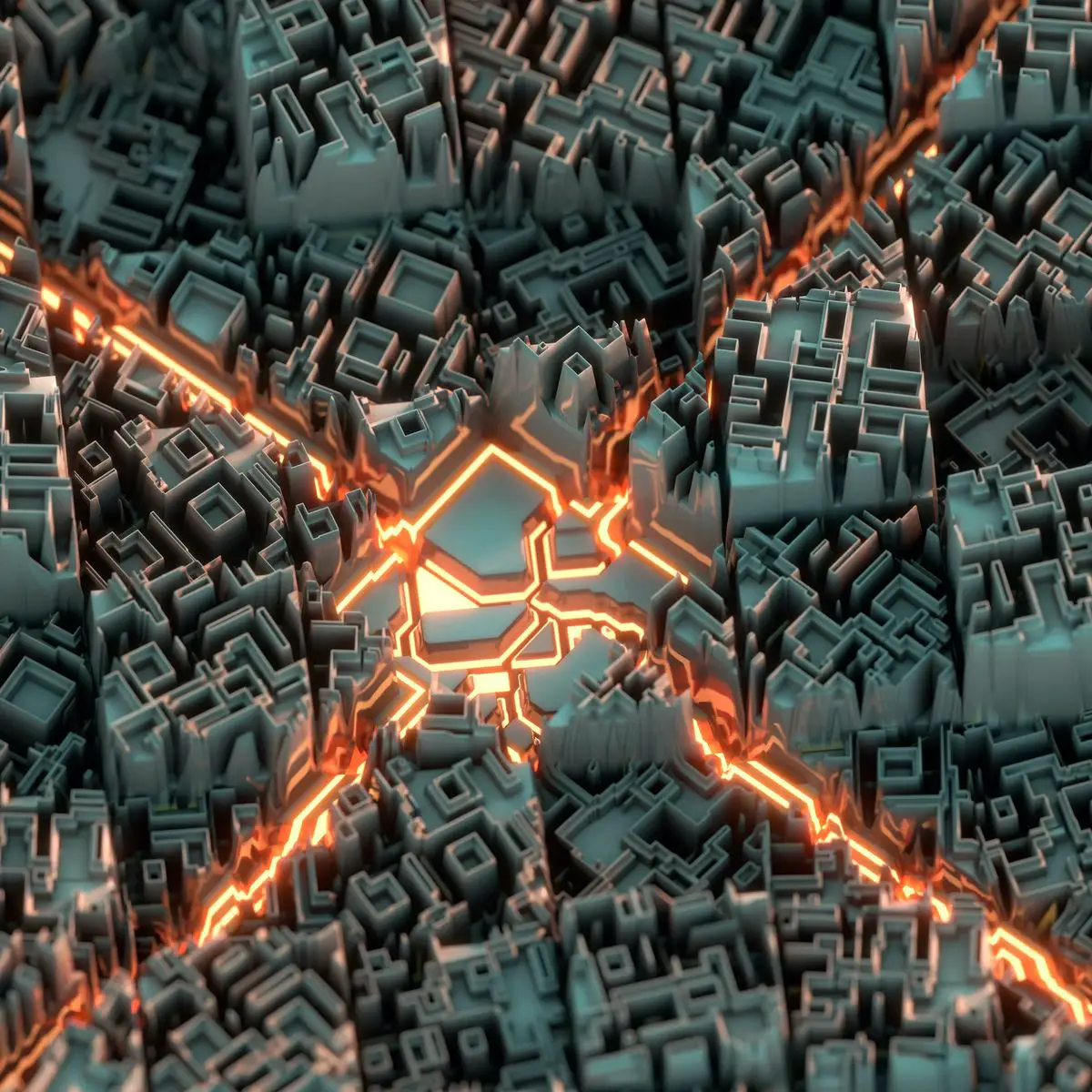Where is the blockchain stored? This is not the first time someone asked this question. Blockchain technology has significantly transformed the way we store and manage data, providing a secure and decentralized approach to storing sensitive information. Blockchain storage is based on a distributed ledger system, where a network of nodes maintains a full copy of the blockchain. This innovative system results in an extremely resilient and tamper-proof storage solution that is highly resistant to cyber attacks and hacking attempts.
In this article, we will explore the concept of blockchain storage in more detail, looking at how it works, its benefits, risks, and challenges. We will also discuss the relationship between blockchain storage and cryptocurrency and examine some of the key factors that are likely to shape the future of blockchain storage. Whether you are a business owner, an IT professional, or simply interested in the latest developments in technology, this article will provide you with a comprehensive overview of the world of blockchain storage.
What is blockchain technology?
Blockchain is a digital ledger technology that allows for secure and transparent transactions without the need for a central authority. It is essentially a decentralized database that enables users to store and share information in a tamper-proof and immutable manner. The technology was initially introduced in 2008 as the underlying technology behind Bitcoin, the first cryptocurrency, and has since gained widespread adoption in various industries.
How does the blockchain work?
The blockchain works by creating a distributed network of computers (nodes) that work together to verify and validate transactions. Here are the basic steps involved in the process:
- A user initiates a transaction by sending a request to the network.
- The network of nodes validates the transaction and checks for any potential fraud or errors.
- Once the transaction is validated, it is added to a block of transactions along with other transactions that have been recently validated.
- The block is then added to the existing blockchain, creating a permanent record of the transaction.
- The transaction is then considered complete, and the user’s account is updated accordingly.
Each block in the blockchain is linked to the previous block, creating a chain of blocks (hence the name “blockchain”). This ensures that any attempts to alter or tamper with a transaction in a block would require the modification of all subsequent blocks, which is virtually impossible. This makes the blockchain a highly secure and tamper-proof technology.

Where is the blockchain stored?
The blockchain is stored on a network of computers (nodes) that participate in the validation and verification of transactions. Each node maintains a copy of the entire blockchain, which is continually updated as new transactions are added to the network. The blockchain can be stored in a decentralized or centralized manner, depending on the type of network and the storage system used.
Decentralized storage
Decentralized storage refers to a system in which the data is distributed across multiple nodes in a network, with each node maintaining a copy of the data. In a decentralized blockchain network, each node stores a copy of the blockchain, creating a distributed ledger that is highly resistant to tampering and hacking. Decentralized storage is a key feature of blockchain technology, as it enables the creation of a transparent, secure, and immutable ledger that is not controlled by a single entity.
Why data redundancy is worth the extra storage space?
Centralized storage
Centralized storage, on the other hand, refers to a system in which the data is stored on a single server or a group of servers controlled by a central authority. This type of storage is commonly used in traditional databases and information systems, where data is accessed and managed by a single entity. However, in the context of blockchain technology, centralized storage is not ideal, as it creates a single point of failure and makes the system vulnerable to hacking and cyber-attacks.
Public vs private blockchain storage
Public and private blockchains differ in terms of their storage systems. Public blockchains, such as Bitcoin and Ethereum, are decentralized and use a distributed network of nodes to store the blockchain. Anyone can join the network and participate in the validation and verification of transactions. Private blockchains, on the other hand, are typically used by organizations and enterprises and are controlled by a central authority. The storage system used in private blockchains can be either centralized or decentralized, depending on the specific needs of the organization.
The future of blockchain storage
As the adoption of blockchain technology continues to grow, the future of blockchain storage is expected to evolve and improve in a number of ways. Here are some possible developments that may shape the future of blockchain storage:
Increased scalability
One of the major challenges facing blockchain technology is its limited scalability. As more transactions are added to the blockchain, the size of the network increases, making it more difficult for nodes to validate and store the data. In the future, new solutions such as sharding and off-chain scaling may help to address this issue, enabling the blockchain to handle more transactions and become more scalable.
Interoperability between blockchains
As the number of blockchain networks continues to grow, there is a need for greater interoperability between different blockchains. This would enable users to transfer assets and data between different networks, creating a more seamless and interconnected blockchain ecosystem.

Improved storage solutions
As blockchain technology continues to mature, new storage solutions are likely to emerge that will make it easier and more cost-effective to store data on the blockchain. For example, new decentralized storage platforms such as IPFS and Filecoin may provide more efficient and secure storage solutions for blockchain data.
Increased use of private blockchains
While public blockchains such as Bitcoin and Ethereum are well-known, private blockchains are also becoming increasingly popular. Private blockchains offer a more controlled and secure environment for businesses and organizations to store data and conduct transactions, and their adoption is likely to increase in the future.
Benefits of blockchain storage
Blockchain technology offers a number of benefits when it comes to storing data, including:
- Security: Blockchain storage is highly secure, as each transaction is verified and validated by multiple nodes in the network, making it difficult for hackers to tamper with the data. Additionally, the use of cryptography and consensus algorithms ensures that data on the blockchain cannot be modified without the approval of the network.
- Transparency: The transparent nature of blockchain storage means that all participants in the network can view and verify the data stored on the blockchain. This makes it easier to track and trace the origin of data and ensures that all parties are held accountable for their actions.
- Immutability: Once data is stored on the blockchain, it cannot be modified or deleted, making it an ideal solution for storing important and sensitive data that needs to be kept secure and immutable.
- Decentralization: Blockchain storage is decentralized, meaning that it is not controlled by a single entity or organization. This makes it less vulnerable to cyber-attacks and ensures that data is not subject to the whims of a central authority.
- Efficiency: Blockchain storage is highly efficient, as it eliminates the need for intermediaries and central authorities, streamlining the transaction process and reducing costs.
- Traceability: The blockchain provides a clear and verifiable record of all transactions, making it easy to track the movement of assets and data on the network.
Risks of blockchain storage
While blockchain technology offers a number of benefits when it comes to storing data, there are also some risks that need to be considered, including:
- Storage limitations: Blockchain storage can be limited in terms of storage capacity and scalability, which can make it challenging to store large amounts of data.
- Energy consumption: The process of validating and verifying transactions on the blockchain requires a significant amount of computational power and energy, which can make it an environmentally unsustainable solution.
- Regulatory challenges: The decentralized and anonymous nature of blockchain technology can make it difficult to regulate and control, which can pose legal and regulatory challenges.
- Lack of privacy: While blockchain technology provides a transparent and immutable record of transactions, it can also compromise the privacy of users, as all transactions are visible to everyone in the network.
- Misuse of technology: Like any technology, blockchain can be misused for illegal or unethical purposes, such as money laundering, fraud, or the financing of terrorist activities.
Security of blockchain storage
Blockchain storage is known for its high level of security due to its decentralized, tamper-proof nature. Here are some of the ways that blockchain technology ensures the security of data storage:
- Cryptography: Blockchain uses advanced cryptographic techniques to ensure that data on the network is secure and tamper-proof. Transactions on the blockchain are secured using complex mathematical algorithms that make it virtually impossible to alter the data without detection.
- Decentralization: The decentralized nature of the blockchain means that there is no central point of control or authority, making it more difficult for hackers to breach the network. Each node in the network maintains a copy of the blockchain, and any attempts to modify the data would require a consensus among the nodes in the network.
- Immutability: Once data is added to the blockchain, it cannot be modified or deleted, making it an ideal solution for storing important and sensitive data that needs to be kept secure and immutable.
- Consensus algorithms: Blockchain uses consensus algorithms to ensure that all nodes in the network agree on the validity of a transaction before it is added to the blockchain. This makes it more difficult for fraudulent or malicious transactions to be added to the network.
- Private keys: Users on the blockchain are identified by their private keys, which are secured using advanced encryption techniques. Private keys are used to sign transactions, ensuring that only the owner of the key can initiate a transaction on the blockchain.
How to become a blockchain maestro?
How to ensure secure blockchain storage?
While blockchain technology is inherently secure, there are steps that can be taken to ensure that data stored on the blockchain remains secure. Here are some best practices for ensuring secure blockchain storage:
Implement strong access controls
Access to the blockchain should be restricted to authorized users only, and strong access controls should be implemented to ensure that users are who they claim to be. This can be achieved through the use of secure authentication methods, such as two-factor authentication, biometrics, or digital certificates.
Use encryption
All data stored on the blockchain should be encrypted to prevent unauthorized access. This can be achieved through the use of strong encryption algorithms, such as AES or RSA.
Regularly monitor the network
The blockchain network should be regularly monitored for signs of suspicious activity or attempted breaches. This can be achieved through the use of network monitoring tools or security information and event management (SIEM) systems.

Maintain up-to-date software
The software used to run the blockchain network should be kept up-to-date with the latest security patches and updates to ensure that any known security vulnerabilities are addressed.
Use reputable service providers
When using third-party service providers to store data on the blockchain, it is important to choose reputable providers with a track record of security and reliability.
Train employees
All employees with access to the blockchain should receive regular training on how to use the technology securely and how to recognize and respond to potential security threats.
Blockchain storage and cryptocurrency
Cryptocurrency is one of the most well-known use cases for blockchain technology, as it relies on the blockchain to securely store and manage transactions. Here are some key points about the relationship between blockchain storage and cryptocurrency:
- Blockchain is essential for cryptocurrency: Cryptocurrency relies on the blockchain to maintain a decentralized and secure ledger of transactions. Each transaction on the blockchain is recorded in a block, which is then added to the existing chain of blocks, creating an immutable and tamper-proof record of all transactions.
- Cryptocurrency wallets use blockchain storage: Cryptocurrency wallets are software applications that allow users to store, send, and receive cryptocurrency. These wallets rely on the blockchain to securely store the user’s private keys and manage their cryptocurrency holdings.
- Cryptocurrency exchanges use blockchain storage: Cryptocurrency exchanges are online platforms that allow users to buy and sell cryptocurrency. These exchanges use the blockchain to securely process and manage transactions, ensuring that all transactions are transparent, secure, and immutable.
- Different cryptocurrencies use different blockchains: There are a variety of different cryptocurrencies, and each cryptocurrency may use a different blockchain. For example, Bitcoin uses the Bitcoin blockchain, while Ethereum uses the Ethereum blockchain. Each blockchain has its own unique features and capabilities, and may be better suited for different types of transactions.
Blockchain storage is an essential component of cryptocurrency, as it provides the security and transparency needed to create a decentralized and trustworthy system for managing transactions. As the adoption of cryptocurrency continues to grow, the importance of secure and reliable blockchain storage solutions is likely to become even more critical.
Final words
Back to our original question: Where is the blockchain stored? Well, the blockchain is stored on a network of computers (nodes) that participate in the validation and verification of transactions. Each node maintains a copy of the entire blockchain, creating a distributed and decentralized ledger that is highly resistant to tampering and hacking.
One of the key tricks of blockchain storage is its use of cryptography and consensus algorithms to ensure the security and integrity of the data stored on the network. This makes it highly secure and tamper-proof, creating a transparent and immutable ledger that is ideal for storing sensitive and important data.
Additionally, blockchain storage offers a range of benefits, including decentralization, transparency, and efficiency. While there are also some risks and challenges associated with blockchain storage, these can be addressed through the use of appropriate security measures and best practices.
As the adoption of blockchain technology continues to grow, we can expect to see new and innovative solutions emerge that will enable blockchain to become an even more powerful and transformative technology for data storage and management.
FAQ
Is blockchain stored in the cloud?
Blockchain can be stored in the cloud, but it is not limited to this storage solution. The blockchain is essentially a distributed ledger that is stored on a network of computers (nodes) that work together to verify and validate transactions. The nodes can be located anywhere in the world, and the blockchain can be stored on a combination of cloud-based and on-premises storage solutions.

Does blockchain have a database?
Yes, blockchain technology is essentially a type of database, but it differs from traditional databases in a number of ways. Unlike traditional databases, which are typically centralized and controlled by a single entity, the blockchain is decentralized and distributed across a network of nodes. Additionally, the blockchain is designed to be highly secure and tamper-proof, using cryptography and consensus algorithms to ensure the integrity of the data stored on the network.
How data engineers tame Big Data?
Who stores the data in the blockchain?
The data stored on the blockchain is maintained by a network of nodes, which are responsible for validating and verifying transactions. Each node in the network maintains a copy of the entire blockchain, creating a distributed ledger that is highly resistant to tampering and hacking. The data stored on the blockchain is secured using cryptography and consensus algorithms and can only be modified with the agreement of the nodes in the network.
Is blockchain stored on every computer?
Yes, every node in the blockchain network maintains a copy of the entire blockchain, creating a distributed and decentralized ledger that is highly secure and resistant to tampering. This means that the blockchain is stored on every computer that participates in the network, creating a highly redundant and fault-tolerant storage solution. The use of multiple nodes ensures that the blockchain remains accessible even if one or more nodes go offline or become compromised.
- SEO Powered Content & PR Distribution. Get Amplified Today.
- Platoblockchain. Web3 Metaverse Intelligence. Knowledge Amplified. Access Here.
- Source: https://dataconomy.com/2023/03/where-is-the-blockchain-stored/



